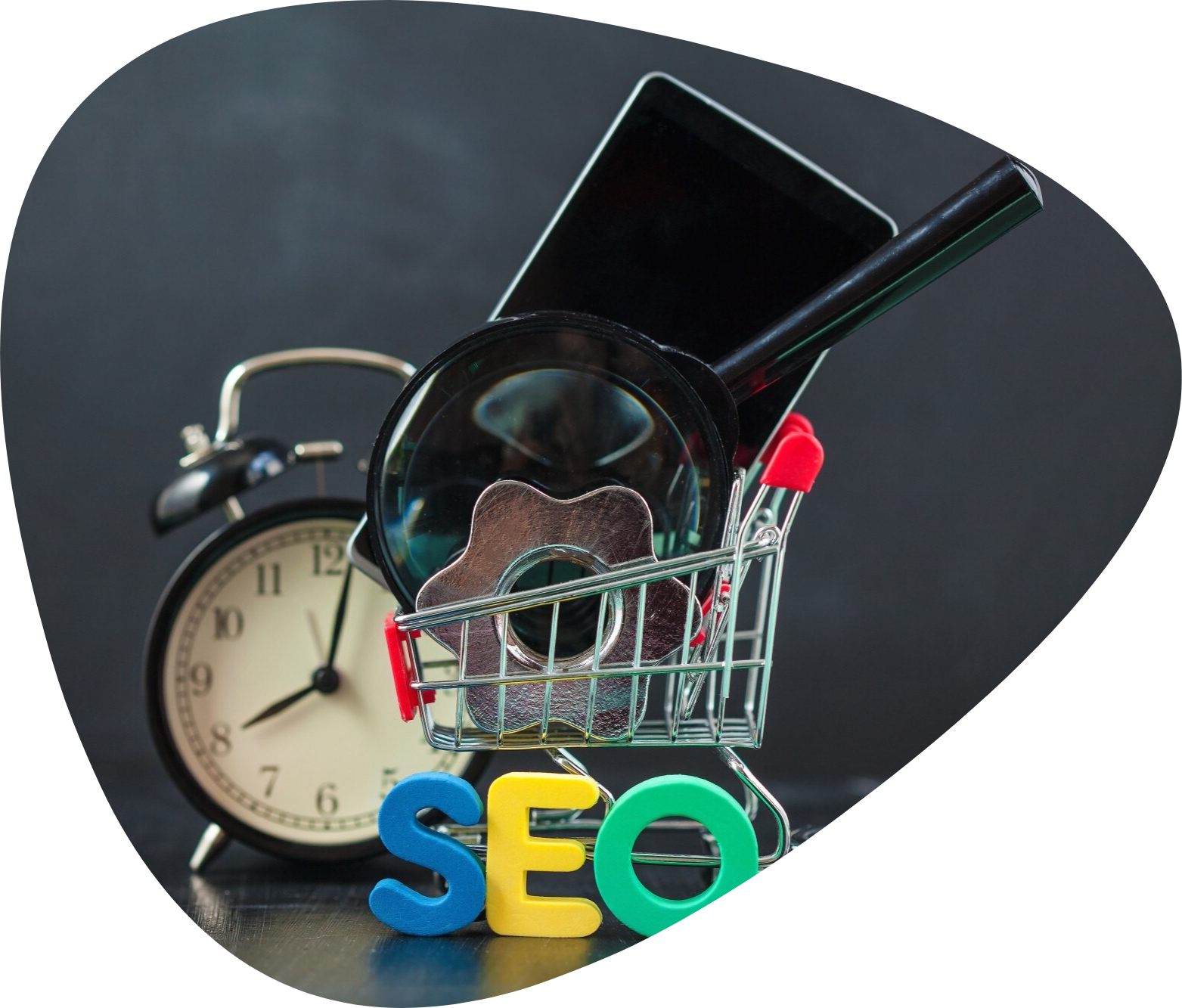Why SEO Is Crucial for E-Commerce Success in 2025
In 2025, SEO remains a cornerstone for e-commerce success, driving organic traffic and boosting visibility in an increasingly competitive digital marketplace. With evolving algorithms and user behavior, optimized content ensures brands reach the right audience at the right time. Effective SEO enhances credibility, improves user experience, and increases conversion rates. As online shopping continues to surge, investing in SEO is not optional—it’s essential.

Why SEO Is Crucial for E-Commerce Success in 2025
In the cutthroat environment of e-commerce, visibility is crucial. Whether your products are awesome or not doesn’t matter if your target audience can’t access them. That’s where SEO (Search Engine Optimization) comes in the role. For e-commerce businesses, SEO is not an option—it’s imperative. It can be the difference between success in the digital market and being lost among the masses.
In this blog post, we will discuss why SEO is crucial for e-commerce sites in 2025, the essentials of an efficient SEO strategy, and actionable tips for implementation.
The Shifting Paradigm of E-commerce
With increasing numbers of companies going online and online shopping becoming the norm and not the exception, the world of e-commerce has never been more congested. The consumers trust search engines like Google, Bing, and even Amazon to find, compare, and buy products.
Based on recent data, over 68% of web activities start with a search engine, and over 90% of customers don’t venture past the initial page of search results. For online shopping websites, appearing on that first page isn’t simply significant—it’s crucial.
Why SEO Is Non-Negotiable for E-commerce Websites
1. Boosts Organic Exposure and Traffic
Organic traffic remains the most sustainable and cost-effective source of long-term website visitors. Unlike paid advertising, which stops delivering results the moment your budget dries up, SEO delivers consistent traffic by helping your product pages, categories, and blog content rank higher.
2. Improves User Experience
Contemporary SEO places great emphasis on user experience. Google’s algorithm takes page speed, mobile responsiveness, and site hierarchy into account when ranking sites. An optimally optimized e-commerce website will inevitably be faster, perform optimally on all platforms, and have easy-to-use navigation—all of which assist in minimizing bounce rates and maximizing conversions.
3. Establishes Credibility and Trust
Showing up on page one of Google tells consumers that your site is reliable and authoritative. Strategically designed SEO activities, such as high-quality content, backlink building, and technical optimization, have the ability to boost the credibility of your brand in the eyes of search engines and consumers alike.
4. Encompasses the Whole Buyer Journey
E-commerce SEO does not end with product pages. Customers conduct a range of searches during their buyer’s journey—from informational searches (“best budget smartphones 2025”) to transactional searches (“buy Samsung Galaxy M54 online”). Addressing all phases of this funnel via SEO content helps you capture leads from awareness to conversion.
5. Decreases Dependence on Paid Advertising
Although paid search may provide instant visibility, it’s a repeated expense. A strong SEO foundation enables you to cut ad spend in the long run without having to compromise on traffic or sales. Consider SEO as an investment that keeps generating returns.
Essential Elements of a Sound E-commerce SEO Strategy
1. Keyword Research for Buying Intent
Do keyword research targeting high buyer intent keywords. Long-tail keywords like “buy wireless headphones under ₹2000” or “best DSLR cameras for beginners 2025” tend to have lower competition and better conversion potential.
Utilize tools such as :
- Google Keyword Planner
- Ahrefs
- SEMrush
- Ubersuggest
2. On-Page Optimization
Ensure each product page is optimized with :
- Unique, keyword-dense product titles and descriptions
- Descriptive URLs
- Header tags (H1, H2, etc.)
- Optimized images with alt text
- Internal linking to similar products or blog posts
3. Technical SEO
E-commerce websites tend to have complex site structures. Make sure :
- Quick page load times (particularly on mobile)
- Secure website (HTTPS)
- Correct crawlability via robots.txt and XML sitemaps
- Canonical tags to prevent duplicate content
- Structured data for rich results (e.g., reviews, prices, availability)
4. Mobile Optimization
Since Google uses mobile-first indexing, it mostly relies on your site’s mobile version for ranking. Ensure that your site is:
- Fully responsive
- Easy to use on smaller screens
- Touch-friendly for all CTA buttons and menus
5. Blogging and Content Marketing
Make blog with a major focus on long-tail and informational keywords searches. Creating articles such as “How to Pick the Best Gaming Laptop in 2025” or “10 Best Affordable Smartwatches” can get traffic, establish authority, and assist with internal linking to your product pages.
6. Digital PR and Link Building
Acquiring backlinks from high-authority websites increases domain authority. Engage with influencers, post guest articles, and get listed in industry roundups to earn quality inbound links.
Typical SEO Issues in E-commerce
• Duplicate Content :
As a result of duplicate product descriptions or filters generating duplicate URLs.
• Thin Content:
Sparse or generic product information that is not worth much.
• Poor Site Architecture :
Messy navigation and deep linking that makes it difficult for users and crawlers to access.
• Indexation Problems :
Critical pages not indexed because of improper settings in robots.txt or meta tags.
These problems can impact your SEO health greatly and need to be audited on a regular basis using tools such as Google Search Console, Screaming Frog, and Sitebulb.
SEO Success Measurement
Monitor performance with :
• Google Analytics
for traffic, bounce rate, and conversions
• Google Search Console
for keyword ranking and indexing problems
• Ahrefs/SEMrush
for backlink profile and keyword rankings
KPIs to track include:
- Organic traffic growth
- Keyword rankings enhancement
- Reduced bounce rate
- Conversion rate from organic traffic growth
How Long Does SEO Take to Work?
SEO is not a miracle, and it is can’t give result instantly. It typically takes 3 to 6 months (sometimes longer) to notice real results. This varies on:
- How competitive your niche is
- The state of affairs on your website at the moment
- The quality and consistency of your SEO work
Imagine SEO is visiting the gym. You won’t get results from a single visit, but become consistent, and the rewards will follow.
Final Thoughts
In 2025, an e-commerce site without SEO is as good as a shop without a sign. Regardless of how lovely your site looks or how technologically sophisticated it is, it will fail without exposure. A quality SEO initiative not only boosts organic traffic but also enhances user experience, establishes authority for your brand, and contributes to long-term business success.
If you’re serious about growing your e-commerce store, SEO investment is not optional, but necessary. Whether you do it internally or with a specialist agency, ensure your SEO building blocks are in place, your strategy is evidence-based, and your content is optimized for search and shoppers alike.
Let SEO guide your e-commerce store into its next growth phase.






